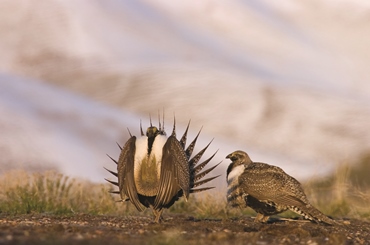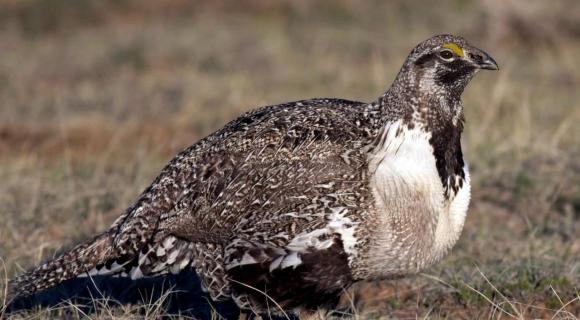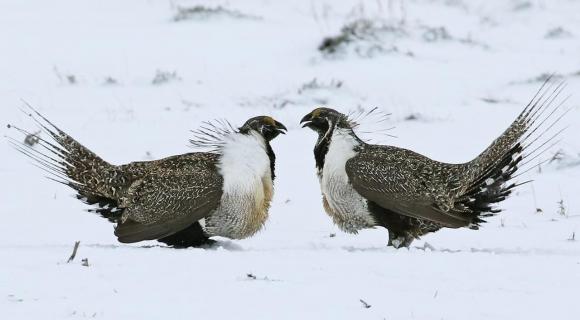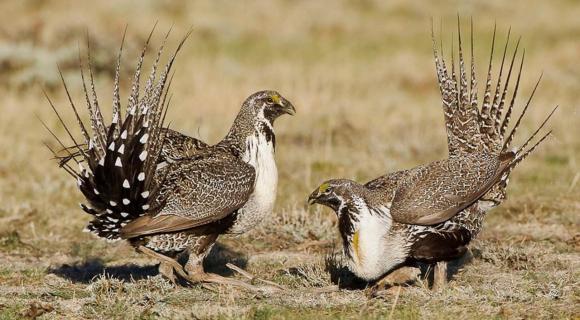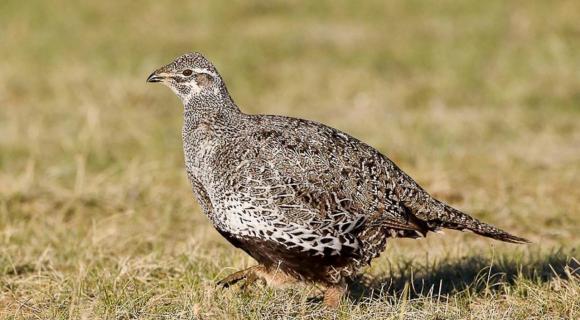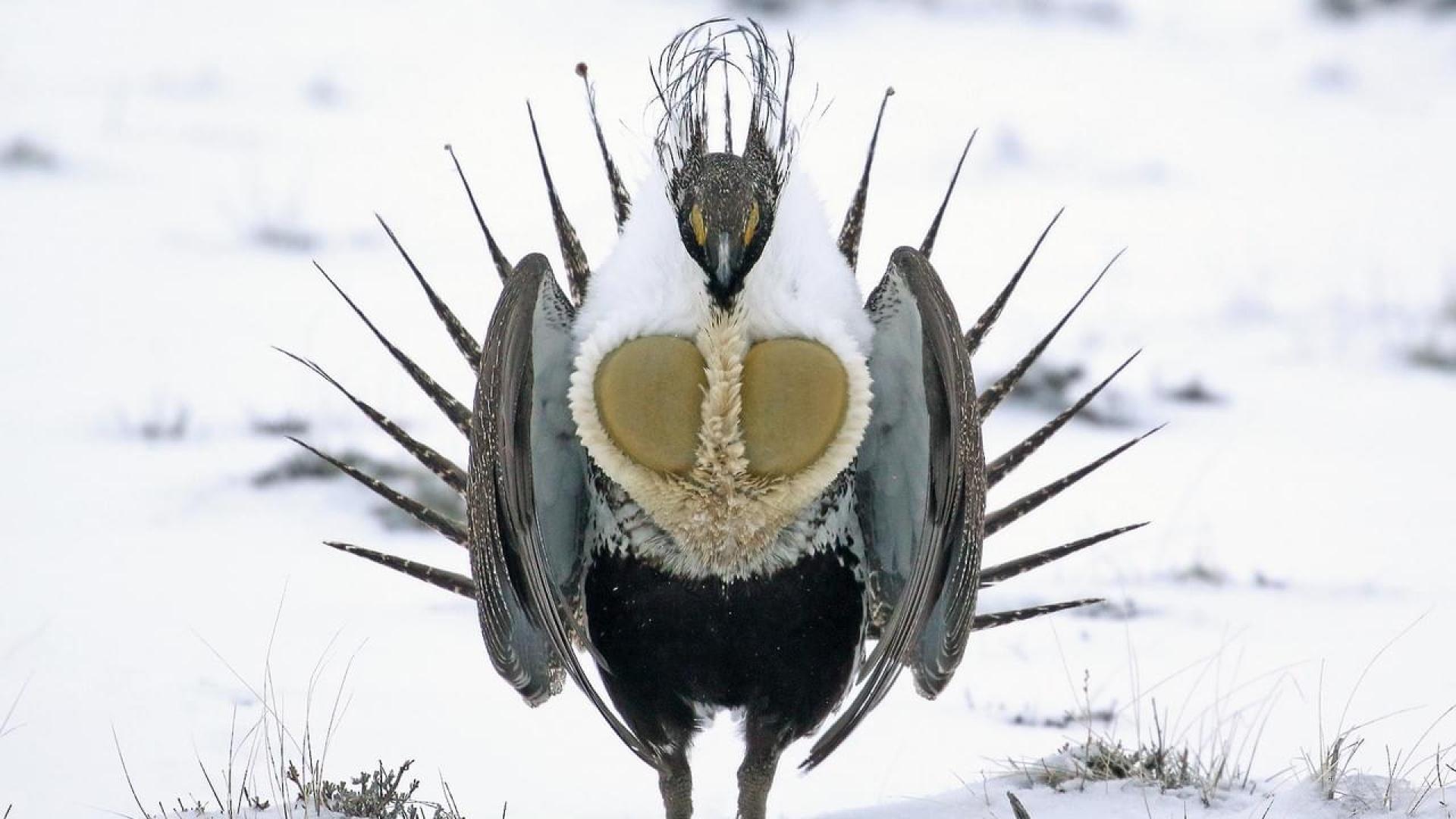
- Body
By Beth Burritt, Utah State University
The iconic western bird was described in the Lewis & Clark journals as they traveled through current-day Montana and Washington. This “new” bird was often called mountain cock or heath hen by the explorers and the Indians indicated the bird was plentiful near the Rocky Mountains. Later settlers called the bird a sage-chicken, a name still used today. Currently we recognize two species of sage-grouse: Gunnison and Greater. Gunnison sage-grouse are slightly smaller and are only found in Colorado and southeastern Utah. Greater sage-grouse are found across a much larger area in 11 western states and two Canadian provinces. When you hear about sage-grouse, generally someone is referring to the greater sage-grouse species. Sage-grouse are well known for their unique mating ritual with several males gathering in an open area to attract females with their strutting and noise making.
Alarmed by recent declines, several groups sued the U.S. Fish and Wildlife Service (USFWS) to list sage-grouse as endangered. Both species of sage-grouse are candidates to be listed as endangered species. However, others feel that sage-grouse are not in danger of extinction because the birds inhabit a large portion of the landscape and current population levels are from 200,000 to 500,000 birds in the U.S. Furthermore, considerable conservation work has been and continues to be done to ensure preservation of the bird. Regardless of the outcome of the USFWS decision, sage-grouse conservation will be a political issue for years to come.
